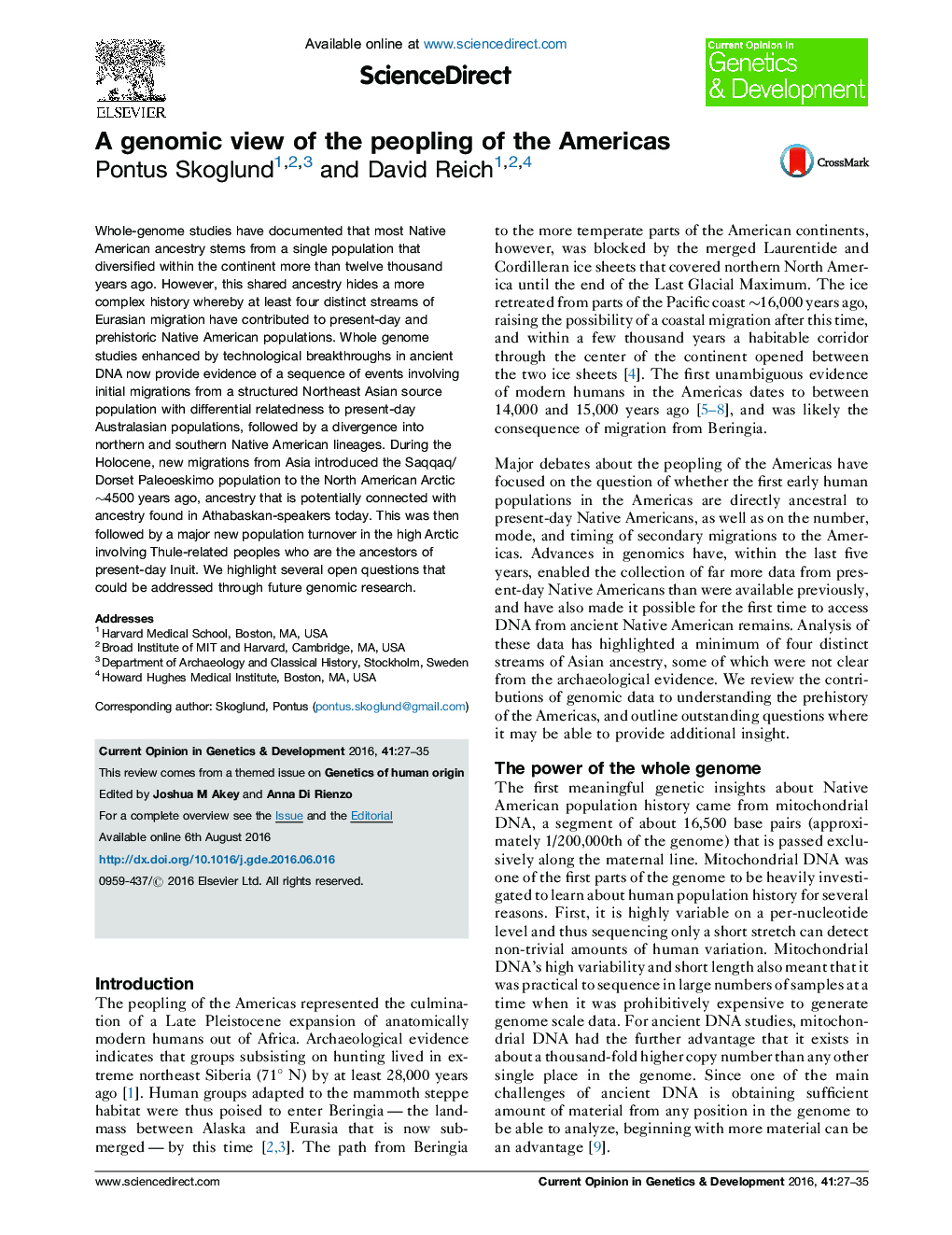| Article ID | Journal | Published Year | Pages | File Type |
|---|---|---|---|---|
| 5892898 | Current Opinion in Genetics & Development | 2016 | 9 Pages |
Whole-genome studies have documented that most Native American ancestry stems from a single population that diversified within the continent more than twelve thousand years ago. However, this shared ancestry hides a more complex history whereby at least four distinct streams of Eurasian migration have contributed to present-day and prehistoric Native American populations. Whole genome studies enhanced by technological breakthroughs in ancient DNA now provide evidence of a sequence of events involving initial migrations from a structured Northeast Asian source population with differential relatedness to present-day Australasian populations, followed by a divergence into northern and southern Native American lineages. During the Holocene, new migrations from Asia introduced the Saqqaq/Dorset Paleoeskimo population to the North American Arctic â¼4500 years ago, ancestry that is potentially connected with ancestry found in Athabaskan-speakers today. This was then followed by a major new population turnover in the high Arctic involving Thule-related peoples who are the ancestors of present-day Inuit. We highlight several open questions that could be addressed through future genomic research.
